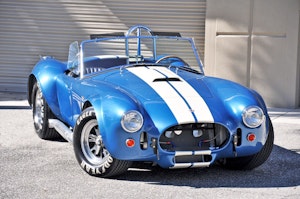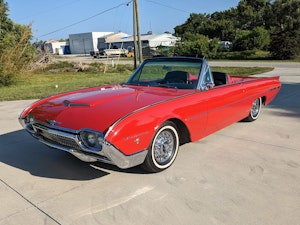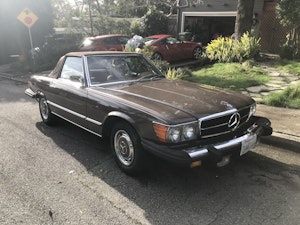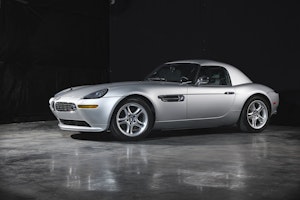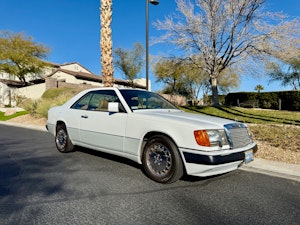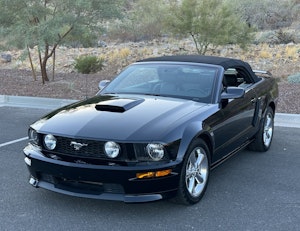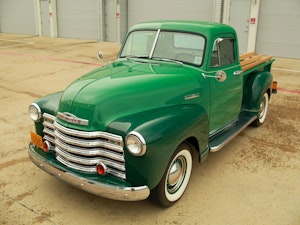Other Perspectives: What is a Thunderbird?
In response to my story on great car names that lost their luster, a reader asked why I had not included the Ford Thunderbird. Indeed, I struggled with that one. Some car enthusiasts feel that Ford hurt the name when it turned the original two-seater into a bigger luxury coupe with a back seat. I think many T-Bird fans feel otherwise. The T-Bird story is far more nuanced than “which is the real T-Bird?”
So, Hagerty is asking, “What makes a Thunderbird a Thunderbird?” I’ll get things started with my opinions and then encourage readers to give their thoughts in the comments section.
What’s in a Name?
Such was the strength of the Thunderbird name, or, as marketers call it, “brand equity,” that it could evolve or morph into different cars over the decades and still find success. The Thunderbird became many different cars, each with its own story, its own level of success and its own fans. With that kind of history, it’s legitimate to ask, “What makes a Thunderbird, a Thunderbird?”
How you answer that depends on what your favorite Thunderbird is. Here’s my take on Ford’s personal luxury car.
Marketplace
Buy and sell classics with confidence
A Tale of Two Icons
Some still argue that the original T-Bird is the “real” one, but I believe that the 1955-1957 T-Bird was more of a pop-culture icon than an automotive icon. Here’s why: Musicians may have written songs about the Thunderbird, but other carmakers didn’t copy it. And although the Ford was conceived as a Corvette-fighter, a few short years later Ford essentially conceded that the T-bird had gone in a different direction.
Ford’s Thunderbird captivated America from the moment it appeared in public in 1954. In its three-year run, the two-seat T-Bird sold about 53,000 cars. That was low by Detroit standards, and no other company saw a business case worth pursuing.
On the other hand, Ford launched a whole new market segment, the “personal luxury car,” when it turned its Thunderbird into a larger coupe for 1958 (a.k.a. “Squarebird”). Other brands would follow: The 1962 Studebaker Gran Turismo Hawk, 1963 Buick Riviera, 1966 Oldsmobile Toronado and even 1967 Cadillac Eldorado owe a debt to the 1958 Thunderbird.
Thunderbird marketing entered new territory with the ’58, positioning a model from a mainstream brand as a luxury lifestyle vehicle. It was a creative – and successful – approach that would serve Thunderbird well for decades.
Jet Age Chariots
As significant as I know the 1958 Thunderbird to be, it’s not my favorite. I much prefer the 1961-1963 and 1964-1966 T-Birds. Both exemplified the decade’s jet age milieu. The 1963-1965 Riviera was a more elegant and beautiful, but those early and mid-’60s T-Birds had Rat Pack swagger. Ford advertising touted “the private world of Thunderbird.”
That brings me to my favorite Thunderbird of the classic era, the 1967. Ford created an all-new look on Thunderbird’s first body-on-frame chassis. The two-door showed the Mustang’s influence in both the proportions and some detailing. I loved the hideaway headlights. The four-door adopted the Lincoln Continental’s rearward-opening “suicide” door style – largely impractical but oh so cool.
Bigger, Not Better
I think Ford got carried away for 1970, putting a big Pontiac-like beak on the T-Bird’s grille. The Thunderbird would keep on growing, sharing the chassis with the larger Continental Mk. IV in 1972. As the T-Bird got bigger, sales got smaller, except for an odd surge to 87,000 for the ’73. The big Bird rode like a cloud, but I never liked these leviathans.
Mainstream Bird
By the early 1970s, the Thunderbird’s hold on “affordable luxury” was under attack from a new wave of even more affordable “personal luxury” cars from mainstream brands, particularly the Pontiac Grand Prix and its cousin, the Chevy Monte Carlo. The concept was the same, and the image marketing was similar. The big difference was the “smaller” size and lower pricing.
Ford took note and issued the 1974-1976 Torino-based Elite as a “midsize car in the Thunderbird tradition.” And then, presto, with a restyle for 1977, Elite became the new “downsized” Thunderbird, with a price trimmed by $3,000. Customers bought nearly a million over three years, making it the best-selling T-Bird ever. The Thunderbird was now mainstream.
Buyers were not as enthusiastic about the 1980-1982 Fairmont-based T-Bird, a smaller car that looked overcooked and awkward wearing the previous models’ neo-classic design cues and overdone trim.
The ninth-generation model put an attractive “aero” body on a Fox-based platform, and sales jumped 50 percent over the previous car. This was an attractive, comfortable and competent midsize coupe, but the T-Bird’s country club status was long gone. The 1987-1988 Turbo Coupe brought back some of T-Bird’s special character with performance and technology, and single-handedly established a cult following.
The End of the Coupe
I’ll state right up front, my favorite Thunderbird is part of the 1989-1997 series, the Super Coupe built through 1995. I loved the design and the way this supercharged model drove.
With the tenth-generation model, Ford tried taking the T-Bird a bit more upscale with more room and comfort and a sophisticated chassis featuring independent rear suspension. The car looked bigger than the previous Thunderbird but was slightly shorter on a nine-inch longer wheelbase, and rear seat room was much improved. This was the longest-running Thunderbird series, at nine years. Customers liked it, but the market for big coupes was dying. SUVs were taking over. Ford pulled the plug on Thunderbird after 1997.
The End, Again
Like many car buffs, I was intrigued by the news of a two-seat T-Bird revival. Yet, upon seeing the production car, I could only think that it was retro design gone too far. I’m sure the 68,000 people who bought a 2002-2005 Thunderbird would disagree with me. However, that figure was well below Ford’s projection, which is why it cancelled the revived two-seat Thunderbird with no successor model.
By trying to appeal to those who longed for the 1955-1957 Thunderbird design, I think Ford missed an opportunity to do something truly creative. They could have brought the original concept into the 21st century. Such a Thunderbird would never have been more than a niche model, but it would have been special, a “halo” vehicle for the Ford line, as the T-Bird once was.
In today’s crossover-obsessed auto market, there’s just no place for “the private world of Thunderbird.” That’s too bad. Cherish your favorite T-Bird, whichever it may be.

